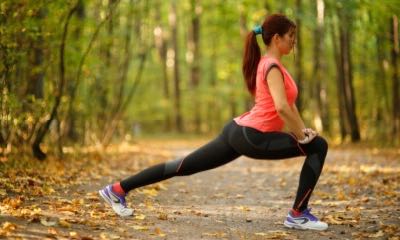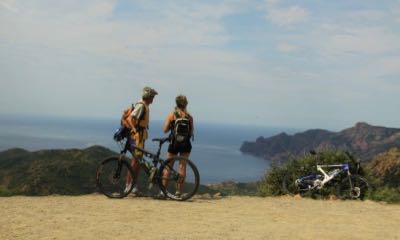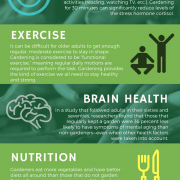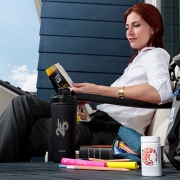Tips for Weekend Warriors
4:59… Tick, tock, tick, tock… BAM! 5:00. Elation. Freedom. Adventure. The moment you never thought would come finally arrives each Friday at 5:00 p.m. You’re released from your 40th hour of duty and ready to leave work behind and tackle the adventures that await. But, as a weekend warrior, your pursuits have an expiration. And the buzzer will sound in a mere two and half days on Monday by 9:00 a.m.
What’s a Weekend Warrior?
Weekend warriors are “everyday athletes.” They’re not quite professional athletes, but they train nearly as hard and do so in the short window of time when they’re not tied to a job. Pressed for time to pursue their athletic goals during the work week, these folks maximize their weekends. Scientifically speaking, weekend warriors pack most, if not all, of their recommended physical activity into one or two days out of the week. This often looks like adventure sports, endurance races, or other sports and playful activities—both solo and team-oriented.
Weekend warriors are the go-getters. They’re the people who work nine-to-five, Monday through Friday, (or any schedule, really) and are intent on making the most of their time off. But weekends might also feel bittersweet because they’re so short. So, how can you maximize those two days? Dive into some tips, tricks, and takeaways to milk each weekend for all it’s worth!
Weekend Warrior Training Tips
The World Health Organization (WHO) strongly encourages adults to engage in regular aerobic activity and strength training (twice) every week. If you prefer moderate aerobic physical activity, you should hit at least 150 minutes per week. If you prefer vigorous, intense aerobic physical activity, your goal at least 75 minutes. (Check out this article to see how to build a proper workout.)
As a weekend warrior, you likely pack those minutes of activity into a day or two instead of spreading them out over a seven-day span. This truncated type of schedule was not the original intent of the WHO guideline. So, does this consolidation exclude you from the benefits of exercise?
Not at all. A study published in the Journal of the American Medical Association: Internal Medicine puts those worries to rest. Researchers surveyed more than 60,000 people over a 20-year span. Based on their exercise habits, participants were considered active (three or more exercise sessions), weekend warriors (hitting the guidelines in one or two sessions per week), or insufficiently active (less than guidelines in one to two sessions per week).
The study concluded that active adults, including weekend warriors, had significantly better health outcomes. Specifically, being sufficiently active for at least one day (or more) per week lessened health risks by 30 percent. The takeaway is that it doesn’t matter how you get your activity done, so long as you get it done.
So, it’s OK if your busy work-week forces you to choose the weekend warrior life. But there are ways you can maximize your training efforts. This could mean warming up and cooling down sufficiently, adding in cross-training, and re-examining the structure of your workout. Here are some ideas (with more to come in the safety section):
Dynamic Stretching
Stretching dynamically means your stretches coincide with movement rather than remaining static. Dynamic stretching allows your muscles to elongate while increasing your heart rate and blood flow. Try walking lunges with an added stretch. Once you step into a lunge, pause long enough to sink down into the bottom of it until you feel a gentle stretch and raise your opposite arm overhead. This will allow for movement in the shoulder joint while stretching out your hip flexor on the same side. Switch sides and repeat.
Build Your Efforts
Ramp up the intensity throughout your workout. This means you don’t start out hard. Instead, you gradually increase your efforts over time. For most athletic pursuits, you can measure this in a number of ways: time splits, weight carried, heart rate, power metrics, and more. Time may be the easiest to measure with the simplest equipment, so start there if you’re new to training.
As you continue warming up in the early stages of your activity session, use time as a measure of effort. For example, if you’re running you could measure the time it takes you to complete a lap or section of a route. As you progress through your workout, aim to decrease that split time. This means you run faster each time you repeat the lap or segment of your run.
If your activity of choice doesn’t lend itself to timing in the same way—say, weight training—you can employ a different strategy. Assign yourself a set time interval for a weighted movement. Start with light weights. With each new interval, increase the weight so your body has a chance to warm up slowly.
High-Intensity Interval Training
Consider high-intensity interval training (HIIT) when you’re especially pressed for time. Or add a HIIT session to your regular routine if you’re looking for something new. HIIT is a workout session made up of short, powerful rounds of cardio activity with minimal recovery periods in between. A great example of HIIT is Tabata training, named for Dr. Izumi Tabata, a Japanese scientist. Tabata workouts are typically eight rounds of 20 seconds of work, followed by 10 seconds of rest. The idea is to work as hard as you can for 20 seconds before moving into the short recovery. Such interval workouts can support muscle mitochondrial function (basically how your muscles make energy), which is a marker of athletic prowess and good health.
Fast and Friendly Fuel On-The-Go
Weekend warriors don’t have time to waste. So, they’re constantly on the move during their precious weekend hours. When you’re scrambling to maximize your days off, it’s important to save time on food preparation. But you also don’t want to skimp on the fuel you need to get after your goals.
Since you’ll be on the move, your calories should come from foods that are easily eaten and digested while in motion. This means simple carbs that your body can easily use as fuel. Energy bars and chews are easy to pack and easy to eat. If you prefer something homemade, work in food prep time the night before your big day out to create your own quick snack.
Hydration is also a key component of proper fueling. Don’t show up to work hard without being properly hydrated or you’re starting at a disadvantage. So, add this easy trick into your routine: hydrate early, and continue to do so often.
And don’t forget your electrolytes or salts. You can turn to your favorite sports beverage mix that you can add to water or a ready-to-drink option. Look into which suits your activity and taste buds the best, and, of course, keeps you exercising at peak performance.
But make sure you get those electrolytes for longer bouts of exercise. You lose salts in your sweat, and it’s imperative they’re replaced. For instance, sodium determines how much water your cells can hold. And if its concentration is off balance, your body’s cells can’t maintain proper regulation.
Properly preparing with pre-workout food and drink is important, too. Luckily, there’s a whole story on that topic to help you out.
Stay Safe, Stay Strong
Each weekend-warrior discipline (mountain biking, cycling, running, climbing, skiing, dominating the gym, and more) comes with unique safety considerations. Whether it’s injury prevention or safety gear, there are many ways to maintain your safety in pursuit of your athletic goals. You’ll see those tips and tricks below.
Injury Prevention
Injury prevention is a broad topic. So, let’s consider outdoor pursuits as an example. Below are several considerations for a handful of different weekend warrior outdoor activities.
| Biking | Running | Rock Climbing | |
| Clothing | Chamois bike shorts;
jersey with pockets; appropriate layers; hat/sunglasses |
Proper trail shoes;
appropriate layers; hat/sunglasses |
Climbing shoes;
appropriate layers; hat/sunglasses |
| Safety Gear | Helmet;
head and tail lights; bike tube repair kit; reflective item/layer |
Headlamp;
reflective; item/layer |
Helmet;
harness; belay device; carabiner; rope |
| Planning Considerations | Bike-friendly route;
traffic/trail conditions; cell-phone-service range |
Weather conditions;
wildlife potential; cell-phone-service range |
Weather conditions;
wildlife potential; rock quality; cell-phone-service range |
| Potential Dangers | Car accident;
popped tires; bike crash |
Inclement weather;
loose trail and rock; getting lost (in dark) |
Inclement weather;
loose rocks; equipment misuse/failure; getting lost (in dark) |
| Should You Tell a Friend? | Yes | Yes | Yes |
From the clothes you wear to the accessories you carry, there are a lot of options that can help fend off injury.
Imagine getting started in the dark hours of an early fall morning. If you’re hopping on your bike, it’s imperative to wear warm clothing to protect you from the elements and make sure your apparel is reflective, too. This is especially true if you’re riding and might cross paths with, or bike alongside, traffic. Make sure others can see you so they can safely avoid you. Strap forward-facing and rear lights to your bike to serve the same purpose. The lights help alert other motorists of your presence.
Let’s continue with the cycling example. You’re wearing your protective, reflective gear, and you make it through the busy roads safely. But now that you’re further away from home, you pop a tire. This could spell disaster if you don’t have a repair kit (or you’re unsure of how to use one), especially if you don’t have cell-phone service.
Make sure you do the following: plan your route with cell coverage in mind, carry a well-equipped repair kit, and understand and practice how to use your repair kit. Without these precautions in place, you may be carrying your bike a long way home. And that journey comes with its own potential dangers.
Now let’s move further out of the city. Perhaps instead of the pavement, you’re hitting the trails. It doesn’t matter if it’s a long trail run, hike, or approach to a place to climb, the potential dangers are unique and require your attention. Be aware of the weather forecast. It becomes especially important if the terrain may be easily influenced by it (think: rockfall, washed out trails, slick footings, flash floods, etc.).
Additionally, depending on the trails in wilderness areas you enter, you may need to be familiar with the wildlife inhabiting those spaces. Do your homework and understand what kind of animals live there. Then study their habits and how to keep yourself safe should you have an encounter.
Quality Recovery for Weekend Warriors
You went out and crushed your weekend goal. Perhaps you biked that beast of a trail, climbed a daring route, or reached a summit by foot-power alone. Now that you are enjoying the afterglow and sense of accomplishment after finishing your workout, it’s time to talk about how to recover properly.
You’ll sense a theme here, because the tenets of recovery aren’t breaking news. There are some main to-dos that should be on your radar, things you should check off your list as each weekend winds down: muscle recovery, hydration, diet, and sleep.
Muscle Recovery
When you’re out there working hard for long bouts of time, your muscles take a beating. Intense exercise breaks down your muscles. It creates microtears in the muscle fibers, which actually allows them to build back up even stronger. But in the interim, the physical sensation manifests as soreness and tightness.
This is the time to slow down and be gentle with yourself. Consider which muscle groups need the most work to narrow down which stretches and movements will best support your recovery. Also invest in some recovery gear. Think: foam roller, massage ball, resistance band, or professional massages to aid in the process. Not sure what this gear looks like and what they do? Let’s find out.
- Foam rolling. If you haven’t already heard of this muscle recovery strategy, take note. Foam rolling is a way to release tight, knotted muscles by utilizing focused pressure. The rollers take numerous forms—hollow or solid cylinders, small or larger spheres, and textured options of the same shapes. Let’s say you have a tight calf muscle. You can place a foam ball under your calf and utilize your bodyweight to apply pressure to the tight muscle. Then by rolling back and forth slowly, you can work to release the muscle tension. An added benefit of this type of movement is increased circulation for proper recovery. There are numerous guides available online for working out tricky spots in various muscle groups.
- Stretching (with and without resistance bands). After exercising and foam rolling, your muscles are sufficiently warm for stretching. Earlier, you read about warming up your muscles with dynamic stretching. But after completing an activity and beginning the wind-down process with light foam rolling, your body doesn’t require dynamic stretching. Now you can focus on static or stationary stretching. Pick a stretch and hold it for at least 15 seconds to allow your muscle to release slowly. If your flexibility is limited, grab a resistance band to extend your reach. The Mayo Clinic has a simple guide to basic stretches.
- Massage. When foam rolling and self-stretching doesn’t cut it, turn to a professional. This could be someone well versed in sports massage or a specialist in body work. Thai yoga massage is a good example. (This type of massage is a fully clothed session in which the practitioner utilizes their own body and weight to apply appropriate pressure and traction to release your tense muscles). Massage therapists understand anatomy and kinesiology (the science of body movement) on a deep level and can provide more insight, advice, and relief. There are also massage therapists that specialize in combinations of traditional massage and guided stretching.
Hydration
Be sure to replace the fluids and salts you’ve lost by hydrating well. This means drinking water and electrolytes. Now that you’re done with your activity, there’s no need to beef up your drink with extra calories (like the sweetened examples above). Just make sure you’re getting in the electrolytes and salts you need for optimal muscle recovery.
Diet
Immediately following your workout or adventure, you want to take advantage of your body increasing glycogen production to fuel your week and next workout. Within 30-60 minutes following your workout, make sure to get a healthy ratio of easily digestible carbohydrates and protein. Somewhere around 1:1 or 2:1 carbohydrate to protein should do. Also, try to avoid fiber and fat immediately during this time. These two macronutrients can slow the absorption of the carbohydrates and protein.
Following this period, and starting at your next meal, get back to your normal healthy diet. Fill up on antioxidant-rich fruits and veggies—blueberries, nuts, peppers, oranges, and leafy greens. Include healthy, lean proteins like chicken, fish, nuts, and beans. Reach for healthy, fiber-rich carbohydrates, generally referred to as “complex” carbohydrates. These include whole grains and vegetables. And lastly, don’t forget the healthy mono- and poly-unsaturated fats, especially omega-3 fatty acids found in fatty fish, walnuts, and flax seeds.
Sleep
Sure, you always need sleep. But when your weekend-warrior body has taken a beating, the necessity is even stronger. Allow for ample rest after your athletic efforts. If possible, begin a wind down routine an hour earlier than normal. It may sound difficult, but once you hit the sheets, your body will thank you.
Sleep is the time our bodies do the majority of repair work. Getting an extra hour of rest will allow your body to begin the repair process. Sleep gives your body time to heal broken-down muscles and replenish energy supplies. It’s also a period in which your mind can relax and regroup. This is an essential period if you want to have enough energy to charge through to the next weekend.
Get Out There and Dominate the Weekend
As a weekend warrior, you have your own sports to enjoy, mountains to conquer, and objectives to achieve. But now you have more tools to do so safely and more efficiently. As you plan your next weekend adventure, consider the tips you’ve learned here. Your preparation, safety considerations, fuel plan, and recovery are the tools that will help achieve your goals with more ease and peace of mind.
About the Author
Jenna Templeton is a health educator and freelance science writer living in Salt Lake City, Utah. After receiving a bachelor of science degree in chemistry from Virginia Tech, Jenna spent five years as a research scientist in the nutritional industry. This work fueled her interest in personal wellness, leading her to pursue a graduate degree in Health Promotion & Education from the University of Utah. Outside of work, Jenna enjoys live music, gardening, all things food, and playing in the Wasatch mountains.
References
“6 Dynamic Stretches That Prep You for Any Workout.” Health.
“7 Best Recovery Foods.” Muscle & Fitness online.
“Chapter 4. Active Adults.” Physical Activity Guidelines, 2nd edition. CDC.
“Drink Up for Sports and Fitness.” WebMD.
Hamilton M. “How to Use a Foam Roller to Warm Up and Cool Down.” Runner’s World.
O’Donovan G, Lee I, Hamer M, Stamatakis E. Association of “Weekend Warrior” and Other Leisure Time Physical Activity Patterns With Risks for All-Cause, Cardiovascular Disease, and Cancer Mortality. JAMA Intern Med. 2017;177(3):335–342.
Shilton AC. “The New Rules of Hydration.” Outside Online.
“The Healing Power of Sleep.” WebMD.
Trewin A, et al. Acute HIIE elicits similar changes in human skeletal muscle mitochondrial H2O2 release, respiration, and cell signaling as endurance exercise even with less work. Am J Physiol Regul Integr Comp Physiol. 2018; 315: R1003–R1016.


















